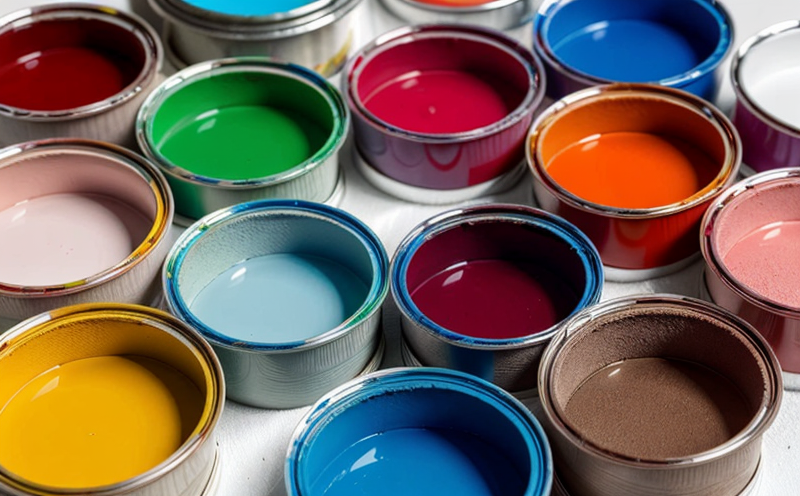EN 71-3 Migration of Toxic Elements in Paints
The European Standard EN 71-3 is a crucial document that sets out specific requirements concerning the migration of certain toxic elements from toys and similar products intended for children. This test focuses on ensuring that these materials do not pose any health risks when ingested or absorbed by children through normal use or reasonable foreseeable abuse.
The standard aims to protect young users by regulating the levels of hazardous substances such as lead, cadmium, chromium, selenium, and other heavy metals found in paints used for toys. The testing procedure outlined in EN 71-3 is designed to simulate conditions under which a child might come into contact with these elements.
This process involves immersing a sample of the toy or its paint component in a solution that mimics gastric fluid, followed by analysis using appropriate spectroscopic techniques like Inductively Coupled Plasma Mass Spectrometry (ICP-MS). The concentration levels of target elements are then compared against specified limits.
Understanding how to properly conduct this test is essential for manufacturers aiming to comply with regulations and ensure product safety. Compliance officers need detailed knowledge about the standard's requirements, while R&D engineers should be aware of current trends in material science that could impact compliance.
For procurement teams, selecting suppliers who already meet these stringent criteria can help avoid costly rework or recalls later down the line. By incorporating early-stage testing into their supply chain processes, companies demonstrate commitment to both regulatory adherence and consumer safety.
Scope and Methodology
The scope of EN 71-3 includes all paints and varnishes used on toys that could potentially come into contact with children's mouths. This encompasses both internal and external surfaces where the paint may be applied.
- Paints for indoor use;
- Paints intended for outdoor use;
- Coatings applied directly to toys;
- Materials that make up parts of the toy which might be put in a child's mouth.
The methodology involves several key steps:
- Selecting representative samples of the paint or varnish,
- Immersion of these samples in a defined solution designed to mimic gastric juice conditions,
- Analyzing the extracted elements via appropriate analytical methods,
- Comparing results against specified limit values provided within EN 71-3.
The analysis typically uses ICP-MS due to its high sensitivity and accuracy in detecting trace amounts of metals. Results are expressed as mg/L, providing clear insight into whether the material meets regulatory standards.
Why Choose This Test
Choosing EN 71-3 for your paint testing ensures that you adhere to international safety standards, thereby protecting children from potential harm. Here are some reasons why this test is important:
- Legal Compliance: Adhering to EN 71-3 helps avoid costly legal issues associated with non-compliance.
- Consumer Trust: By demonstrating commitment to safety, you build trust among consumers and retailers.
- Risk Management: Early-stage testing allows for identification and mitigation of risks early in the production process.
- Better Quality Control: Regular testing provides valuable data on product performance, helping maintain consistent quality across batches.
In today's competitive market, maintaining a reputation for producing safe products is vital. Meeting strict international standards like EN 71-3 sets you apart from competitors and enhances your brand image.
Competitive Advantage and Market Impact
- Regulatory Leadership: Compliance with EN 71-3 demonstrates leadership in adhering to stringent international safety standards, which can be a key differentiator for your brand.
- Consumer Confidence: Meeting this standard enhances consumer confidence, leading to increased sales and market share.
- Risk Reduction: By identifying potential risks early through rigorous testing, you minimize the likelihood of recalls and associated costs.
- Innovation Opportunities: Understanding the latest requirements allows you to innovate within safe parameters, staying ahead of competitors.
Companies that prioritize safety in their product development processes benefit significantly from enhanced reputation and customer loyalty. These factors contribute directly to increased profitability and long-term success.





